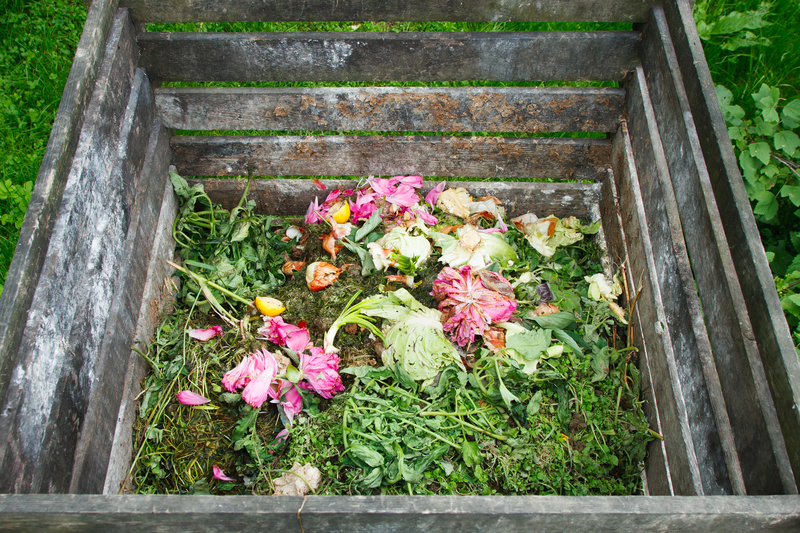How to Transform Your House into an Eco-Friendly Space
As we become increasingly aware of our environmental impact, many of us are looking for ways to reduce our carbon footprint. One of the most effective places to start is in our own homes. In this guide, we'll explore various methods to transform your house into an eco-friendly space that is not only sustainable but also cost-efficient and beautiful.
The Importance of Creating an Eco-Friendly Home
The concept of an eco-friendly home is tailored to reduce energy consumption, minimize waste, and use sustainable materials. By making small changes, you can significantly decrease your household's environmental impact, save money on utilities, and create a healthier living environment.
Benefits of an Eco-Friendly Home
- Energy Efficiency: Reduces energy bills and reliance on non-renewable resources.
- Healthier Living Space: Enhances indoor air quality by reducing toxins typically found in conventional materials.
- Cost Savings: Long-term savings due to reduced maintenance and utility costs.
- Increased Property Value: Eco-friendly features can boost your home's market appeal.
- Environmental Impact: Contributes to a cleaner, more sustainable environment.

Steps to Make Your House More Eco-Friendly
1. Optimize Energy Use
One of the first steps in creating a sustainable home is to enhance energy efficiency. This not only reduces energy bills but also minimizes your carbon footprint.
- Install LED Lighting: Replace incandescent bulbs with LED lights which use less energy and last longer.
- Smart Thermostats: Use programmable thermostats to control heating and cooling systems efficiently.
- Energy-Efficient Appliances: Upgrade to appliances that are Energy Star certified to cut down energy use.
2. Harness Renewable Energy
Transitioning to renewable energy sources can significantly reduce your reliance on fossil fuels.
- Solar Panels: Installing solar panels is a great option for generating renewable electricity.
- Wind Turbines: For areas with consistent wind flow, small-scale wind turbines can be an effective solution.
3. Water Conservation
Water is a precious resource, and conserving it is an essential aspect of creating an eco-friendly home.
- Low-Flow Fixtures: Install low-flow showerheads and faucets to reduce water usage.
- Smart Irrigation Systems: Use automated systems to regulate water usage in gardens.
- Rainwater Harvesting: Collect rainwater for watering plants and flushing toilets.
4. Sustainable Materials and Furnishings
Using sustainable materials helps reduce your environmental impact by choosing products that are eco-friendly and non-toxic.
- Recycled Materials: Opt for recycled metal, glass, and paper products.
- Bamboo and Cork: These materials are renewable and make excellent flooring options.
- VOC-Free Paints: Use paints with low or no volatile organic compounds to improve indoor air quality.
5. Waste Reduction and Recycling
Reducing waste and recycling are crucial for maintaining an eco-friendly household.
- Compost Organic Waste: Divert food scraps and yard waste from landfills by composting.
- Recycling Bins: Provide designated bins for different recyclable materials.
- Reuse and Upcycle: Transform old items into new, functional pieces.

Implementing Eco-Friendly Design
1. Green Architecture
Eco-friendly design principles can maximize natural light and ventilation, reducing energy needs.
- Passive Solar Design: Position your home to take advantage of natural light and heat.
- Natural Ventilation: Use windows and vents to enhance airflow and reduce reliance on HVAC systems.
2. Indoor Plants
Plants not only beautify a space but also improve air quality by absorbing toxins.
- Aloe Vera: Known for its air-purifying qualities and healing properties.
- Spider Plant: Great for removing formaldehyde and pollutants.
3. Eco-Friendly Landscaping
Outdoor spaces can also contribute to an environmentally friendly home.
- Native Plants: Choose plants native to your area that require less water and maintenance.
- Permeable Pavers: Use materials that allow water to seep through and replenish groundwater.
The Path to a Greener Home
Transform your living space into a more sustainable environment one step at a time. By integrating these eco-friendly home elements, you will not only contribute to a healthier planet but also enjoy the personal benefits of lower utility costs and a more comfortable living environment. Whether you start small with energy-efficient light bulbs or take a bigger leap with solar panels, every effort counts.
Remember, creating an eco-friendly space is an evolving process, constantly adapting to include new, sustainable practices and technologies. As advancements continue in green building and technology, staying informed and proactive will pave the way to an even more efficient and environmentally conscious lifestyle. Start today, and become a part of the solution for a sustainable future.